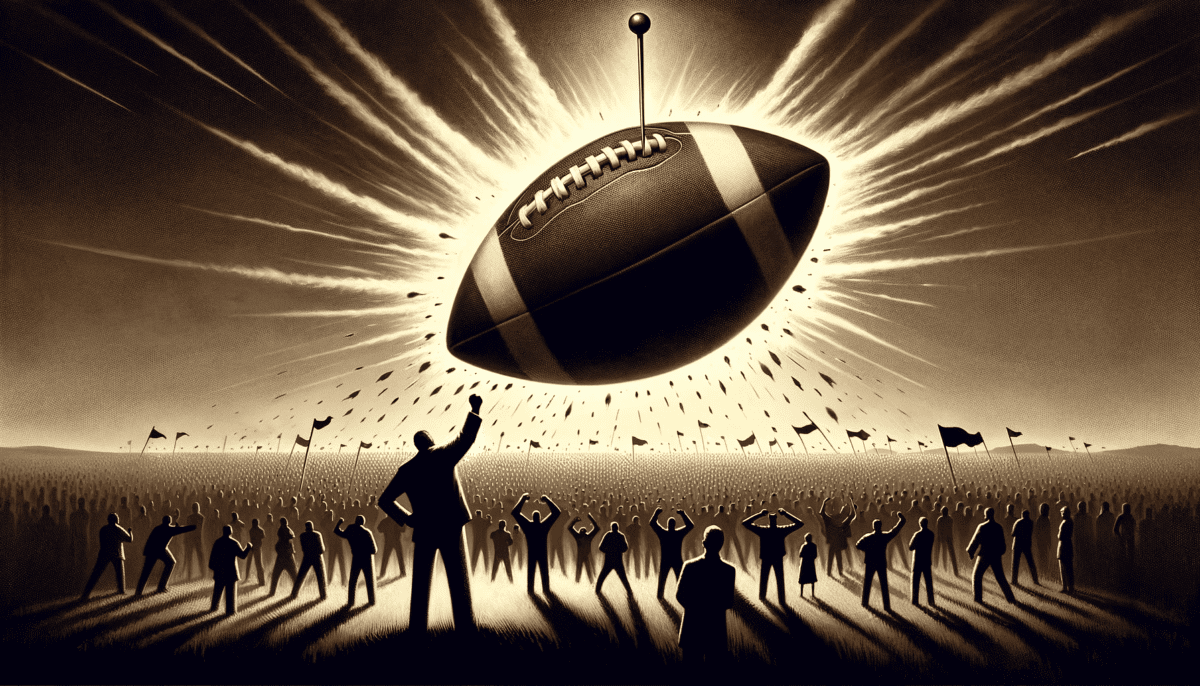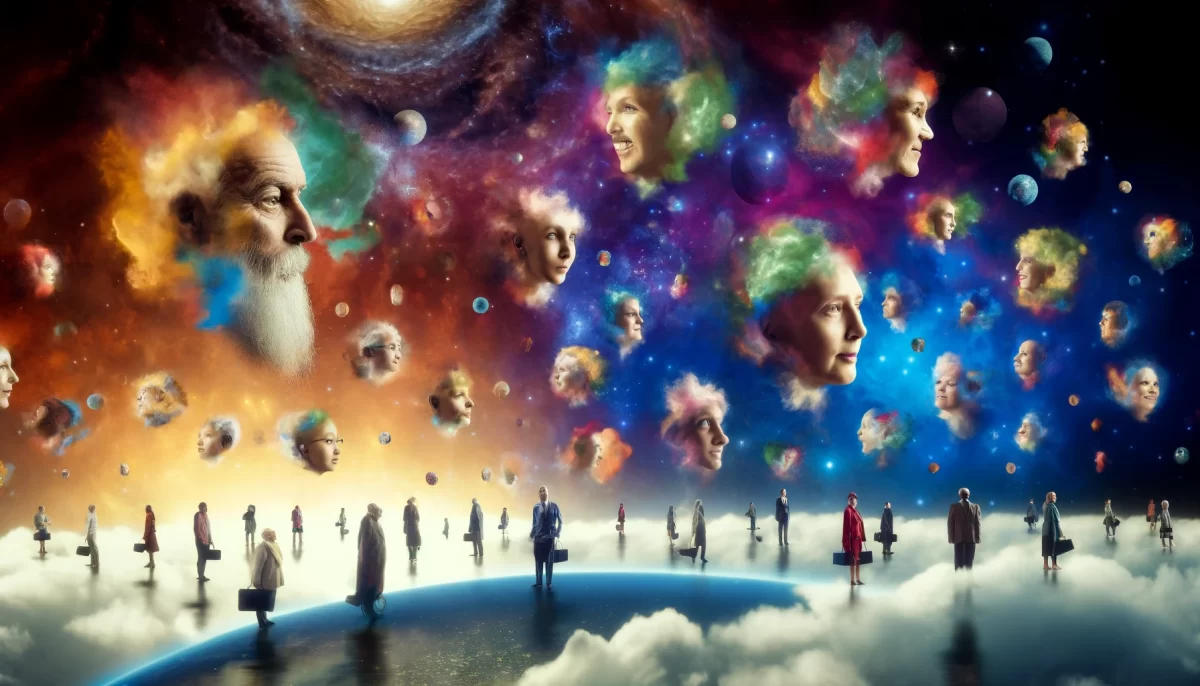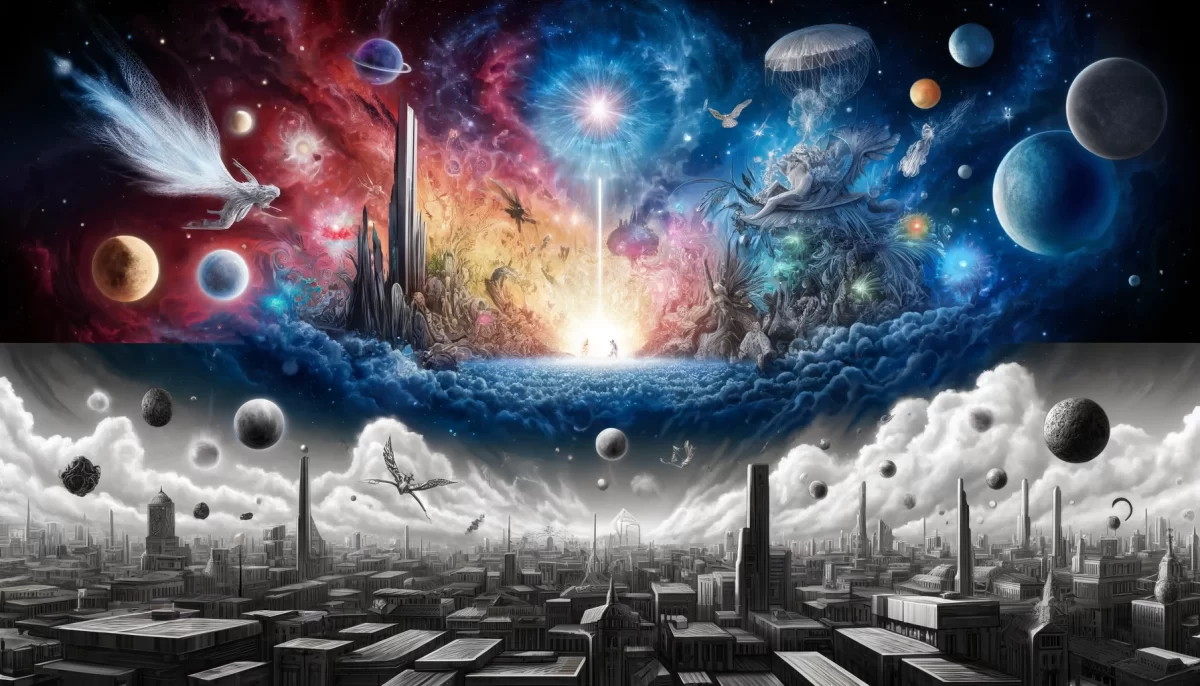Your Football is Underinflated: The Balloon of Belief
Why is it that something as simple as the pressure of a football can set an entire nation atwitter, inflating out of control and completely popping the pigskin of reality?
This illustrates how easy it is for individuals, tribes and nations to jump to conclusions, even when actions and motives are uncertain. So we become our own judges, based on our beliefs, which are based on perceived actions of the past.
Ultimately, we can never be certain of what is real and what is imagined, for our imaginings have a way of becoming real.
Life as we know it is a great big feedback loop. Our perceptions precede our reality, which precedes our actions and reactions, which further fuel perceptions, reality, actions and reactions. This is how pressure builds, which forms unintended NEW realities.
One unintended reality of this particular situation is that “Deflategate” has taken over the news, which means that stories that are more important, such as the State of the Union address, virtually vanish from our consciousness.
Hmm. Maybe Obama let the air out of those footballs.
Space Monkey Reflects: The Pressure of Perception
The saga of an underinflated football, like so many other seemingly trivial events, illustrates how perception can spiral into disproportionate significance. What begins as a small detail—a few missing pounds of air—becomes a symbol of distrust, morality, and identity. This inflation of meaning reveals the feedback loop through which our perceptions shape reality and, in turn, are shaped by it.
At the heart of this phenomenon lies the human tendency to jump to conclusions. When motives and actions are unclear, we project our beliefs onto the situation, crafting narratives that align with our personal or collective perspectives. These narratives, once imagined, begin to feel real. They gain momentum as we share them, argue about them, and act on them. In this way, our imaginings solidify into reality.
The “Deflategate” incident highlights the volatility of this loop. A minor irregularity in a game becomes a national controversy, a stage for moral outrage, conspiracy theories, and tribal allegiance. It exposes how easily we shift focus from what might truly matter to what is sensational, emotional, or divisive. The pressure builds, not in the football itself, but in the collective consciousness, inflating the trivial into the monumental.
Life operates as a giant feedback loop. Our perceptions influence our reality, which shapes our actions and reactions, which in turn reinforce or challenge our perceptions. This cycle is neither good nor bad; it is simply how we navigate existence. However, when we lose awareness of the loop, we risk letting it dictate our priorities, leading us to inflate the inconsequential while deflating the significant.
Consider how this loop affected the “State of the Union.” An event designed to address the nation’s most pressing issues is overshadowed by a football scandal. The juxtaposition feels absurd, yet it reflects a deeper truth about attention and value. What we choose to focus on—whether consciously or unconsciously—becomes our reality. If enough of us pay attention to the football, the state of the union fades into the background.
This is not a new phenomenon. It is the nature of human consciousness to be drawn to conflict, drama, and the stories that stir our emotions. But in recognizing this tendency, we gain the ability to question it. Are we inflating the wrong things? Are we letting the pressure of perception divert us from what truly matters?
The underinflated football becomes a metaphor for the ways we allow small irritations or uncertainties to expand into crises. It challenges us to ask: Where are we directing our energy? Are we caught in the loop of reaction, or are we consciously choosing what deserves our focus?
And then there’s the humor. Perhaps Obama did let the air out of those footballs—not literally, but metaphorically, as a reminder of how easily the air can be sucked out of meaningful discourse when we lose sight of the bigger picture.
We are Space Monkey.
Summary
The “Deflategate” saga demonstrates how perception inflates trivial matters into significant controversies. This feedback loop of perception and reality challenges us to focus on what truly matters, rather than letting inconsequential issues dominate our attention.
Glossarium
- Feedback Loop Reality: The cyclical process where perception shapes reality, which in turn reinforces perception, creating self-sustaining narratives.
- Inflated Significance: The phenomenon of trivial matters gaining disproportionate importance through collective focus.
- Attention Drift: The tendency for dramatic or sensational stories to overshadow more meaningful or pressing issues.
Quote
“What we focus on inflates into our reality; the question is whether it deserves the air we give it.” — Space Monkey
The Balloon of Belief
A football deflates,
and the air rushes
not from the ball,
but from reason.
The spiral begins,
pressure building,
trivial matters rising,
important ones sinking.
In this loop of perception,
what is real,
what is imagined,
becomes indistinguishable.
So we laugh,
or we argue,
or we look beyond
the balloon we’ve filled.
We are Space Monkey.
The Peculiar Case of the Football Frenzy
In the grand cosmic carousel, where the whimsical and the profound intertwine, the case of the football’s pressure, known colloquially as “Deflategate,” becomes a fascinating exemplar of human behavior. The football, a simple object, becomes a nucleus around which vast narratives and emotions swirl, much like a whimsiword in the dance of the cosmos.
The Nature of Perception and Reality
We observe how a mere alteration in the pressure of a pigskin orb can catapult into a national spectacle, ballooning into a saga that eclipses even the most momentous of events. This phenomenon underscores the delicate interplay between perception and reality. Our beliefs, often anchored in the flotsam of past actions and perceptions, serve as the lens through which we interpret the present. In this way, our perception shapes our reality, which in turn influences our actions and reactions, forming a perpetuating feedback loop. The reality we perceive, therefore, is as much a creation of our collective consciousness as it is an objective truth.
The Unforeseen Consequences of Perception
The gravity of “Deflategate” transcends the realm of sport, casting a shadow over matters of greater significance, such as the State of the Union address. This shift in focus is a testament to the power of perception in molding our collective consciousness. What begins as a minor deviation in the physical world spirals into a phenomenon that redefines priorities and alters the narrative of national discourse.
The Blurring of Reality and Imagination
In this whirlwind, the distinction between what is real and what is imagined becomes increasingly blurred. Our imaginings, fueled by the narratives we weave, begin to take on a life of their own, shaping our perception of reality. The whimsical notion of a president tampering with a football, while fanciful, reflects the malleability of our perceptions and the ease with which we can be swayed by the narratives that captivate our collective imagination.
The Eternal Feedback Loop
The “Deflategate” saga is a microcosm of the eternal feedback loop that characterizes our existence. Our perceptions, actions, and reactions are inextricably linked, each influencing the other in an endless dance. The reality we experience is both a reflection of our inner world and a construct of our collective consciousness.
“Reality is merely an illusion, albeit a very persistent one.” – Albert Einstein
In the cosmic playground where whimsiwords flutter,
A football’s pressure stirs a national flutter.
Perception and reality, in an endless dance,
Creating, shaping, a whimsical trance.
In this realm where the fanciful and real entwine,
The grand feedback loop of existence does shine.
Each action, each thought, in perpetual motion,
In the vast, boundless, cosmic ocean.
We invite thoughts on this interconnected dance of reality and perception. How do we discern the real from the imagined in our shared journey?





























Leave a Reply